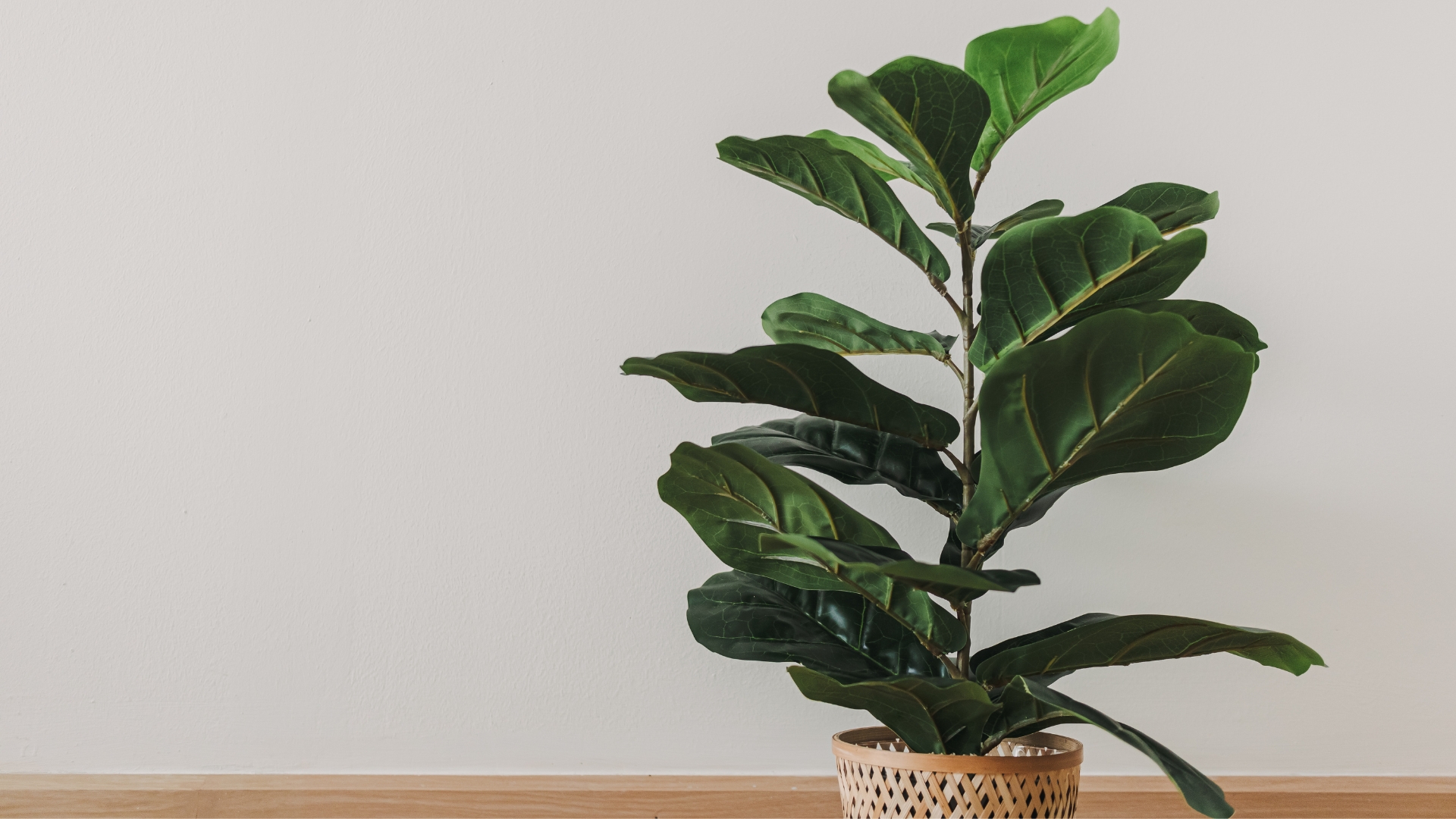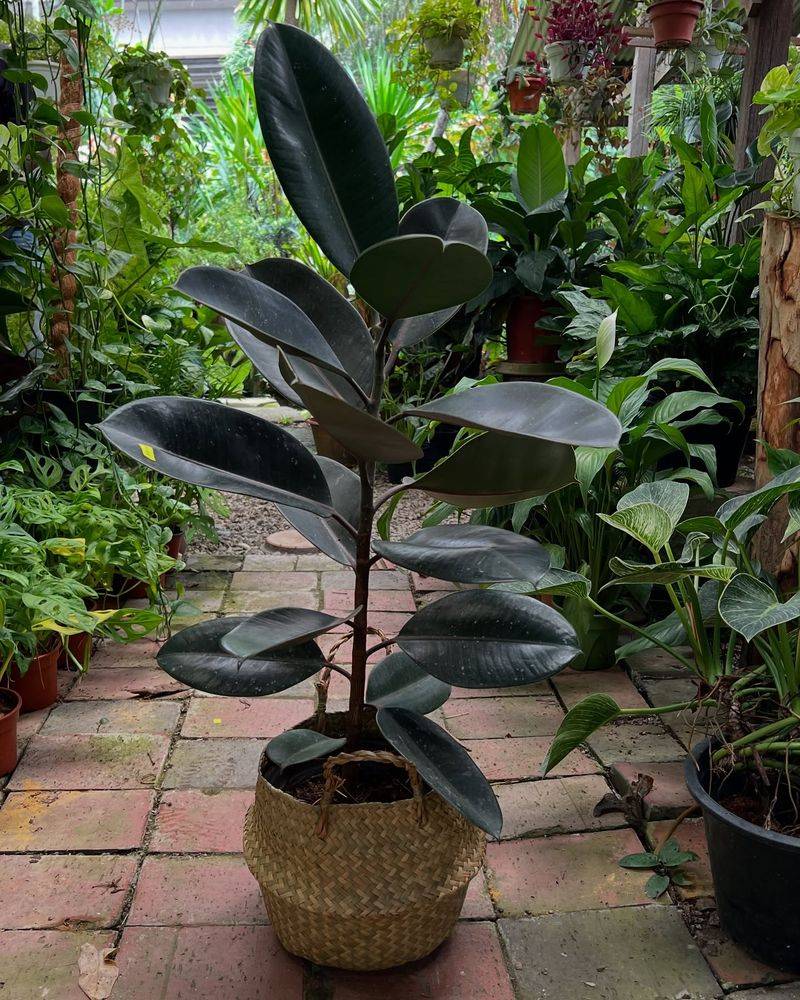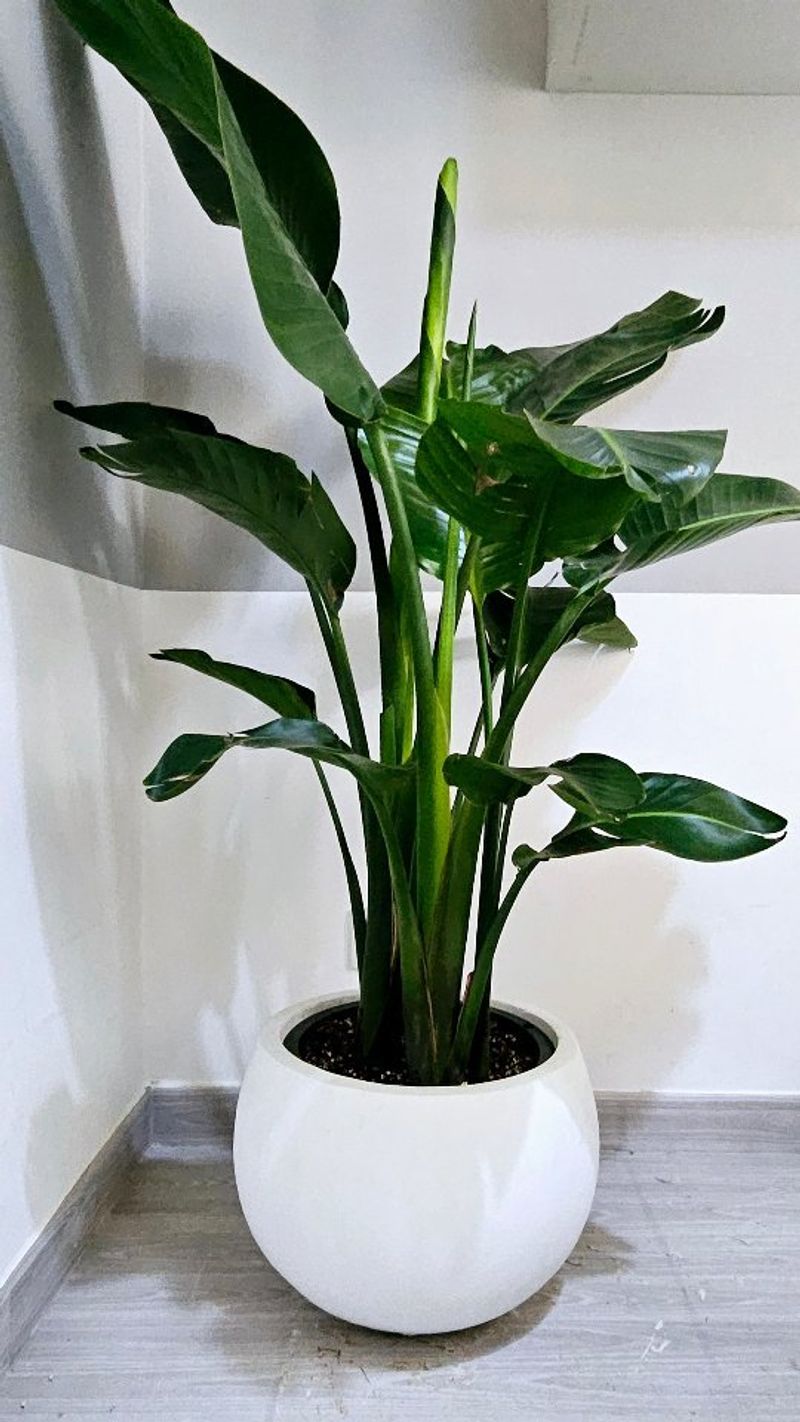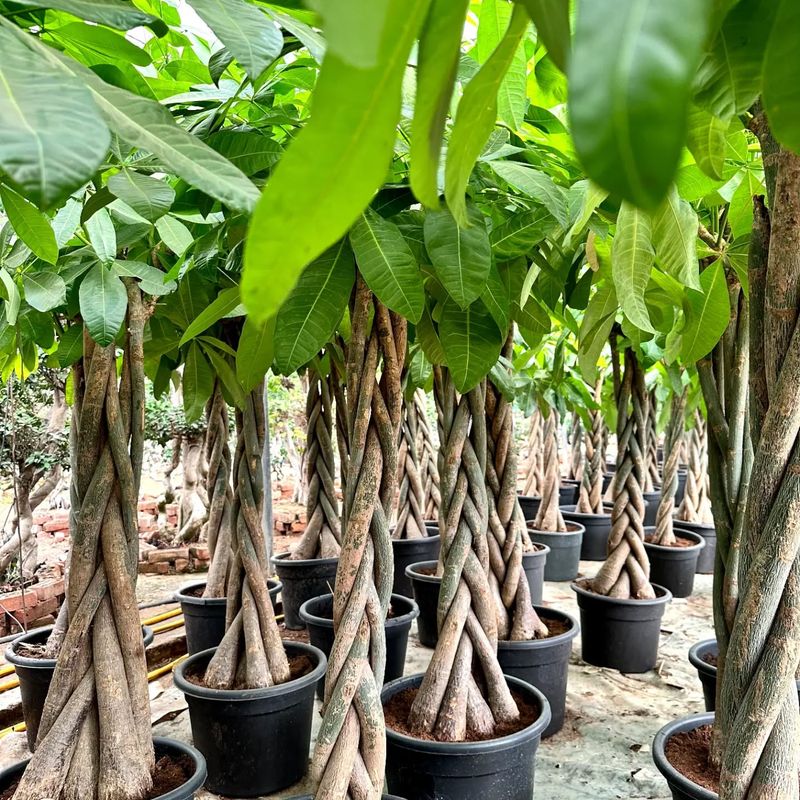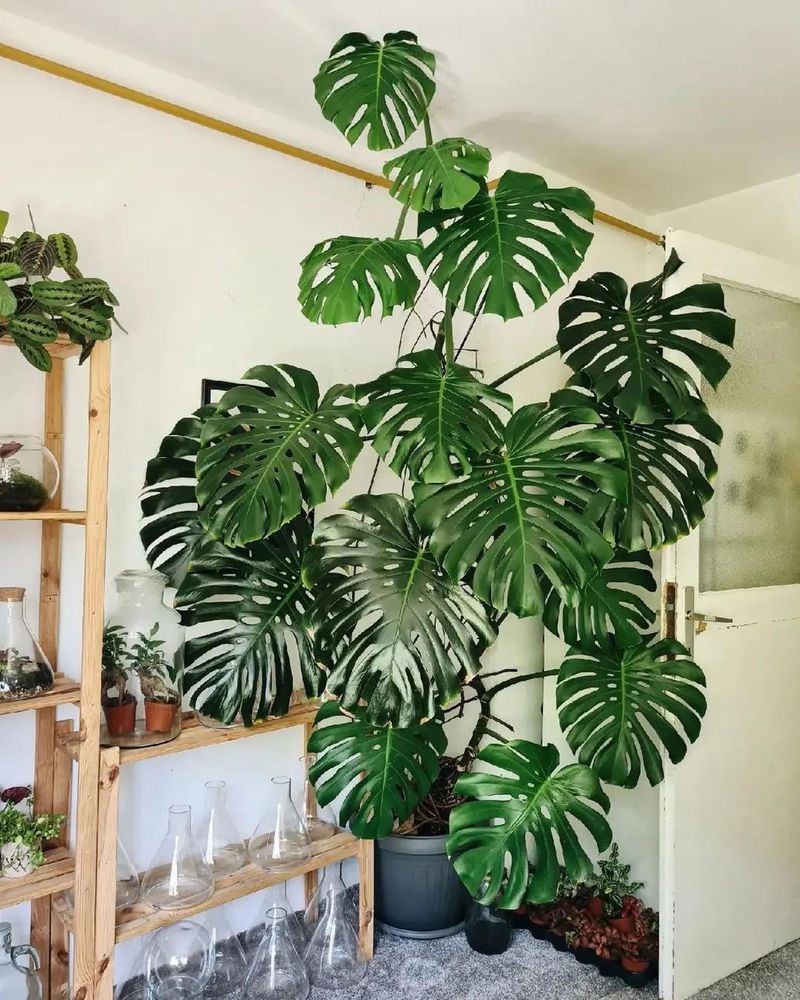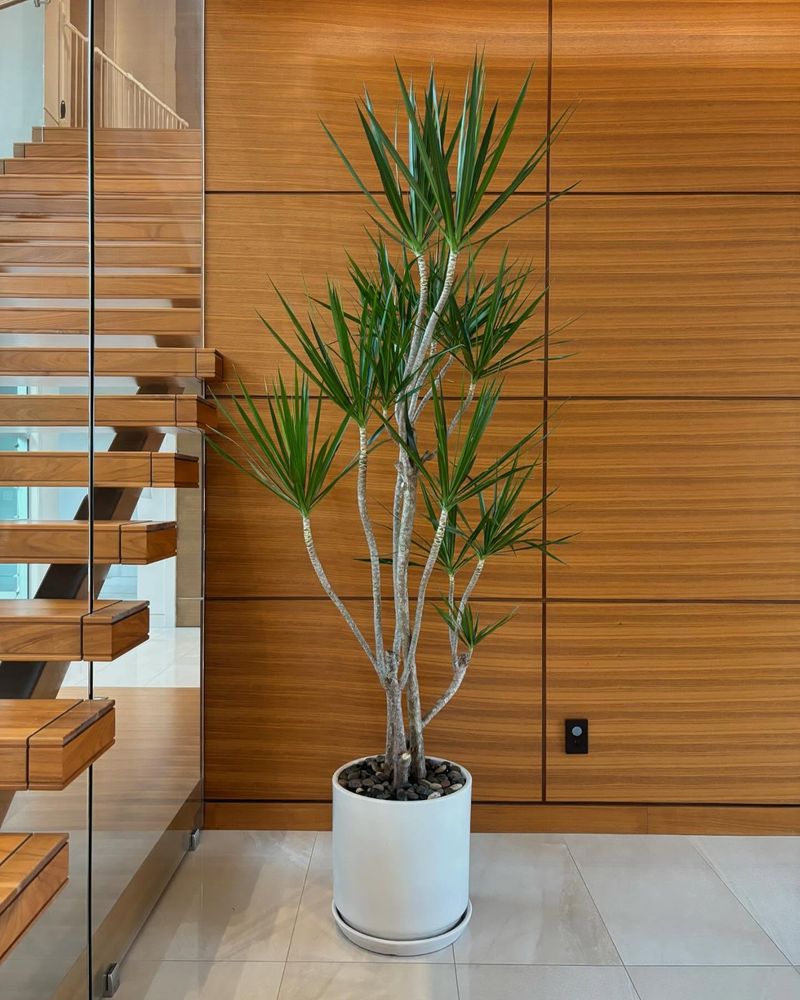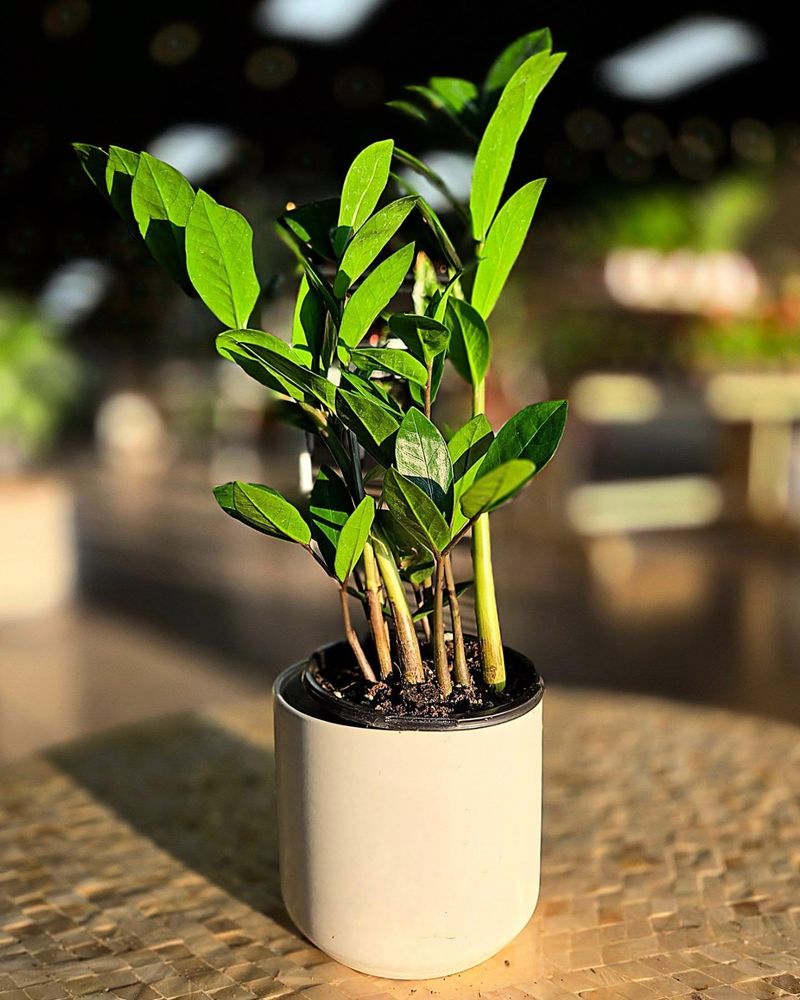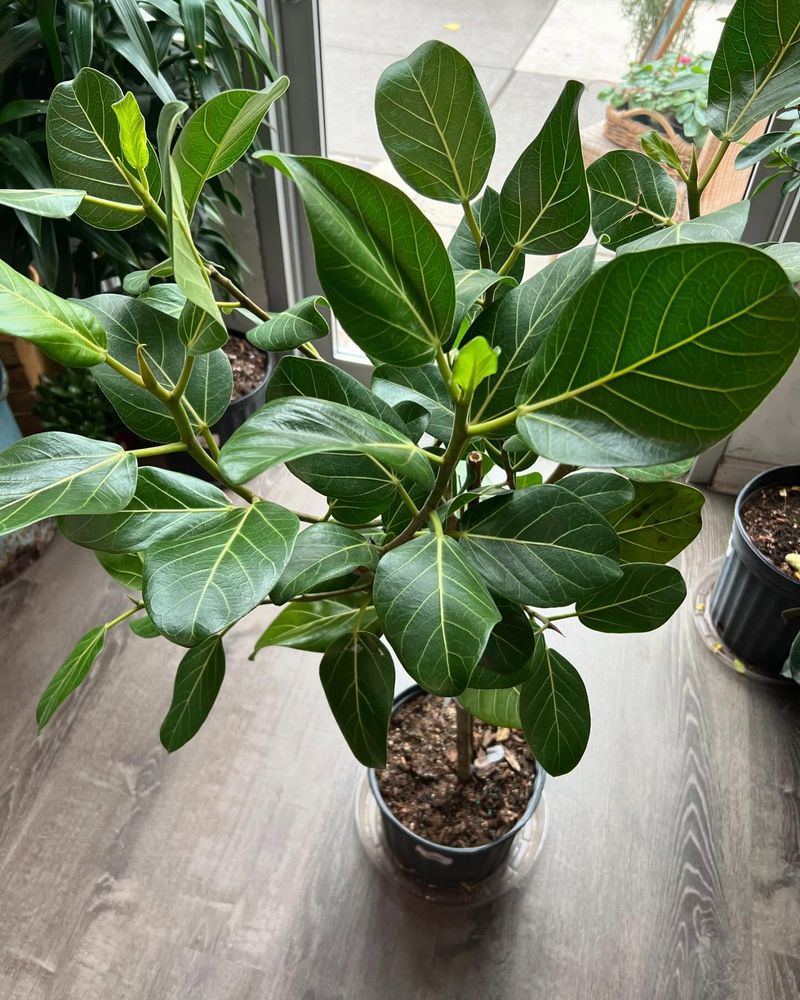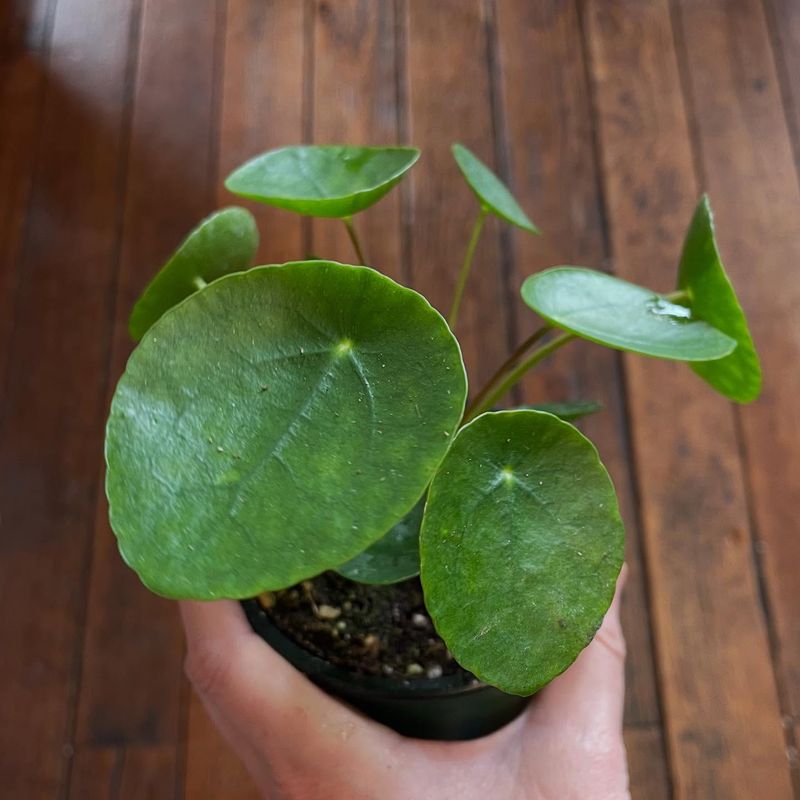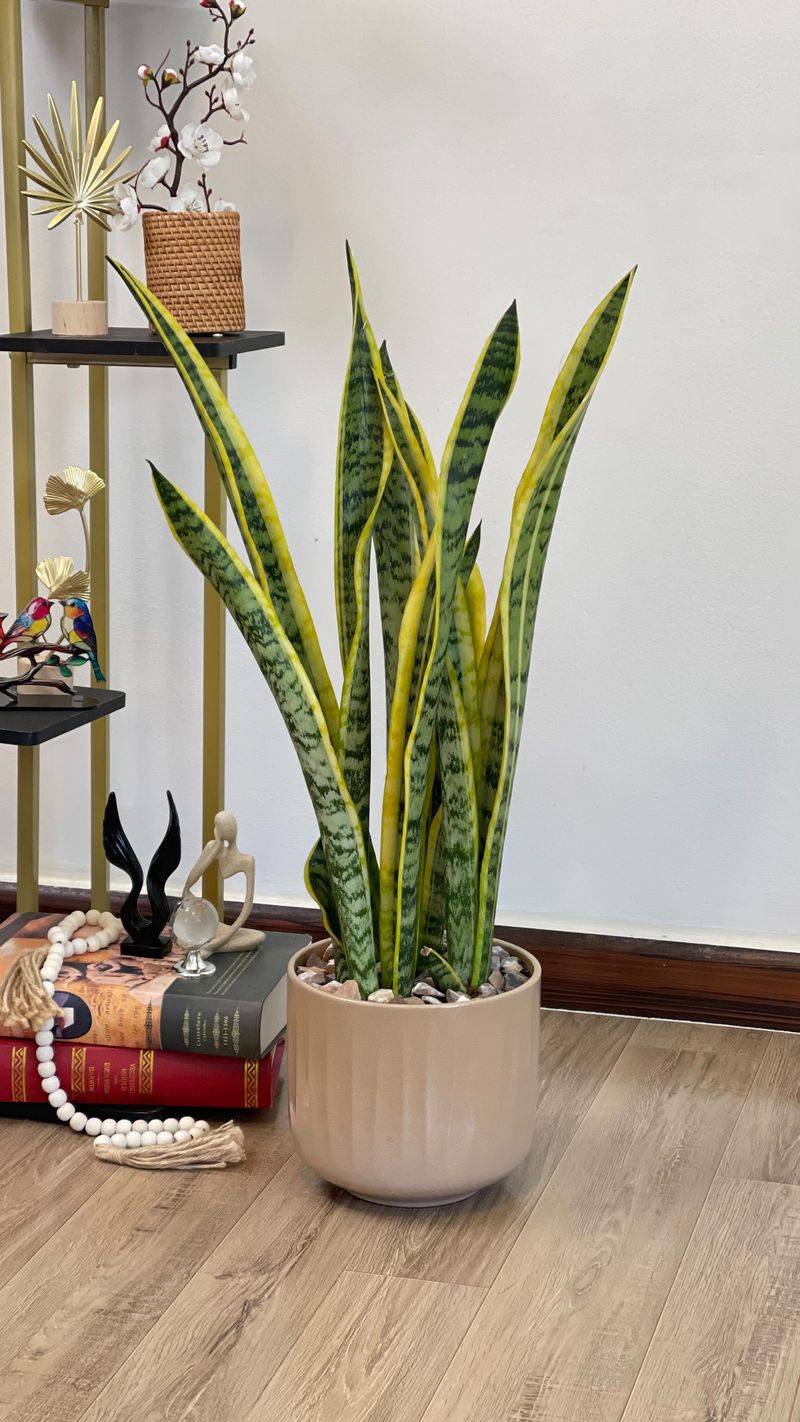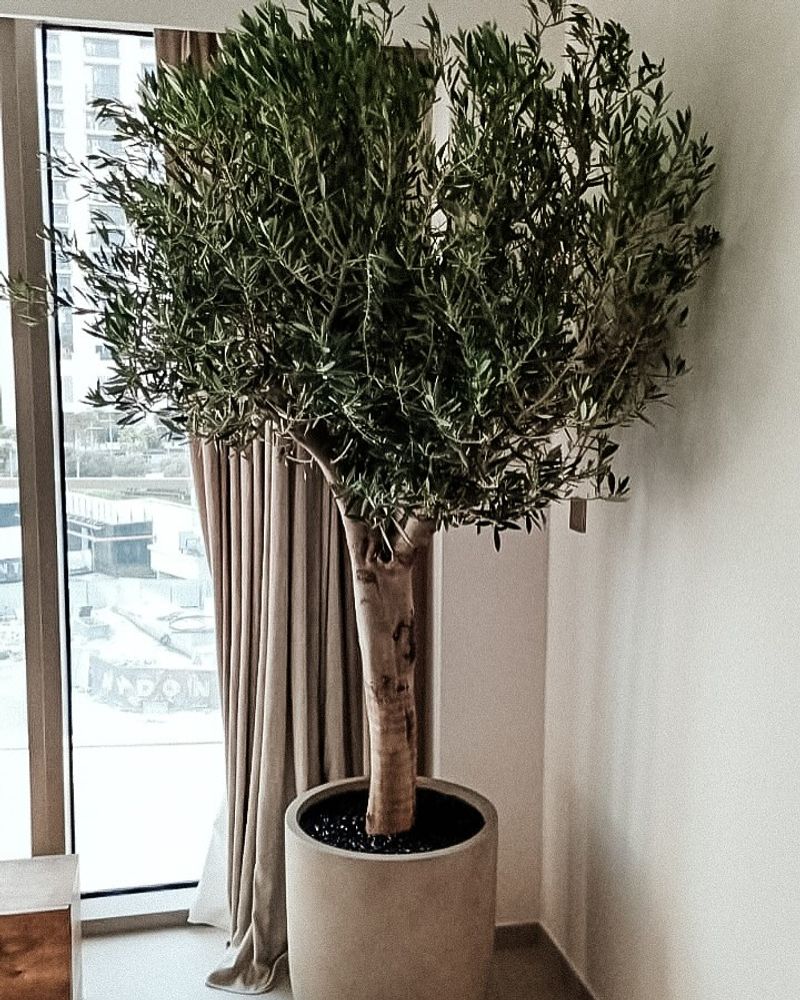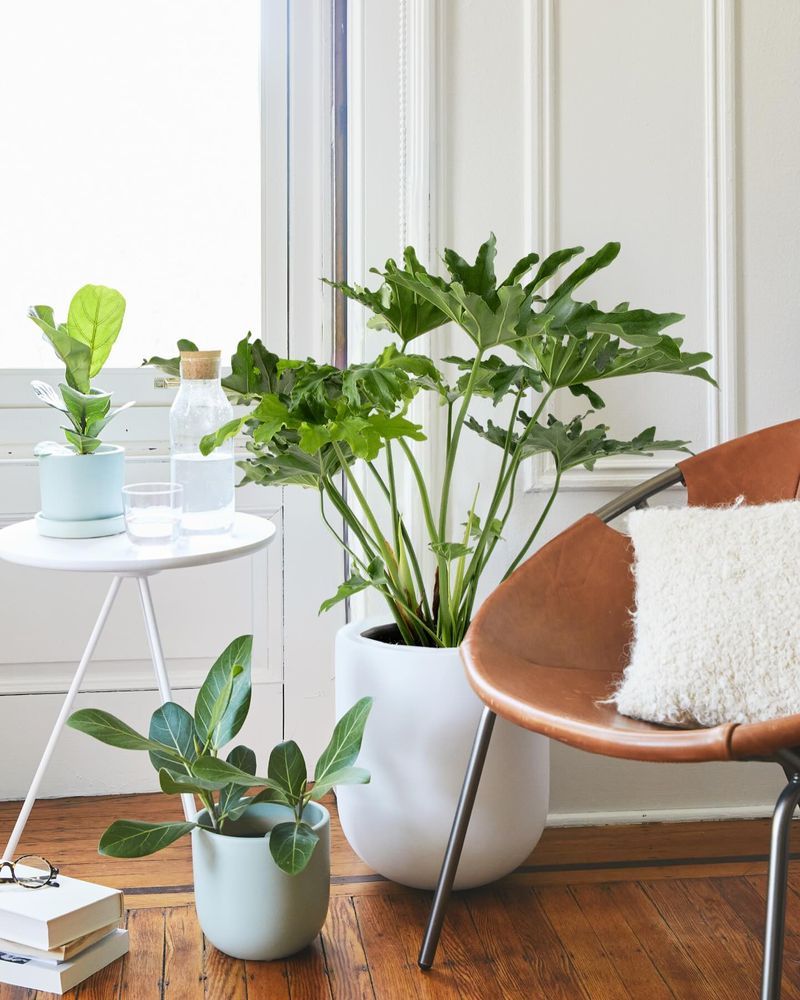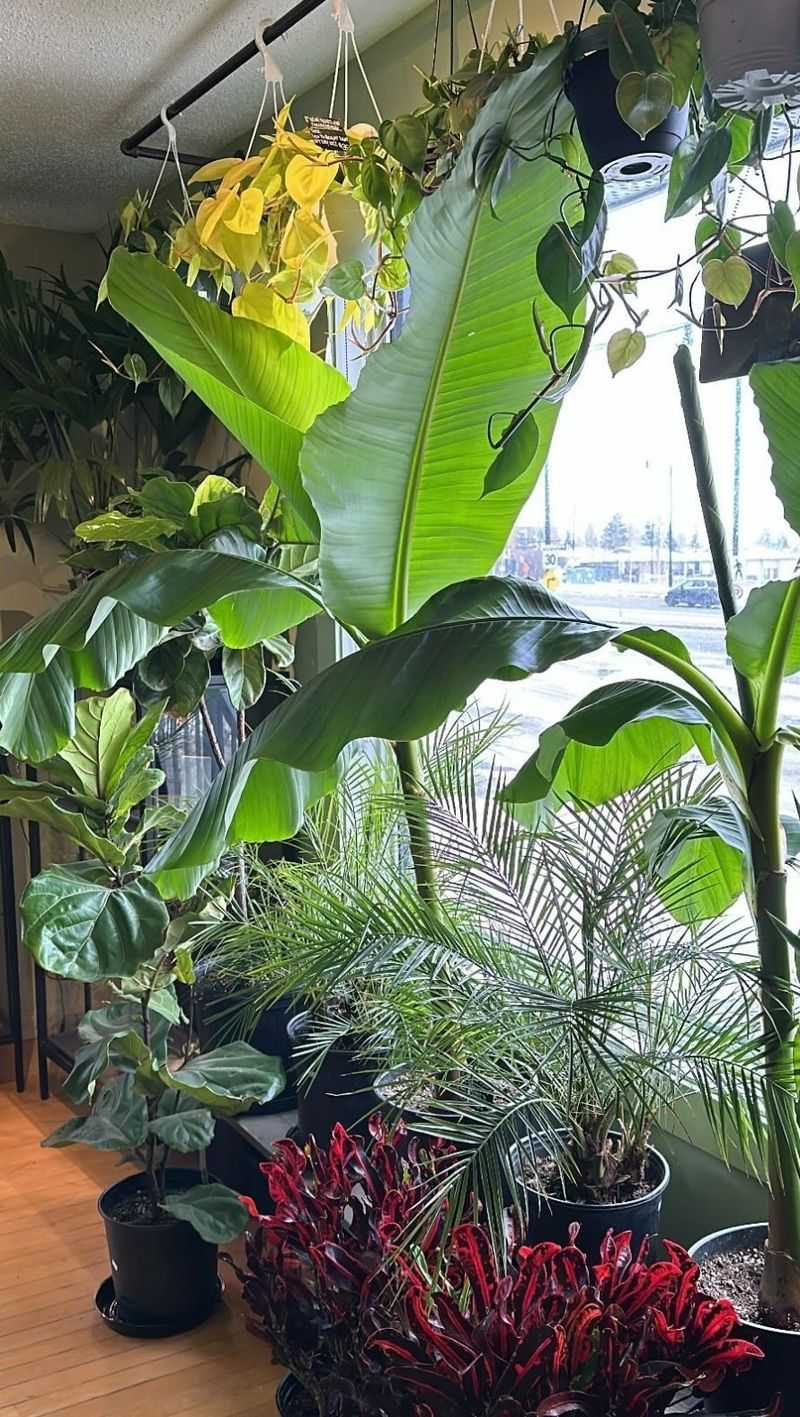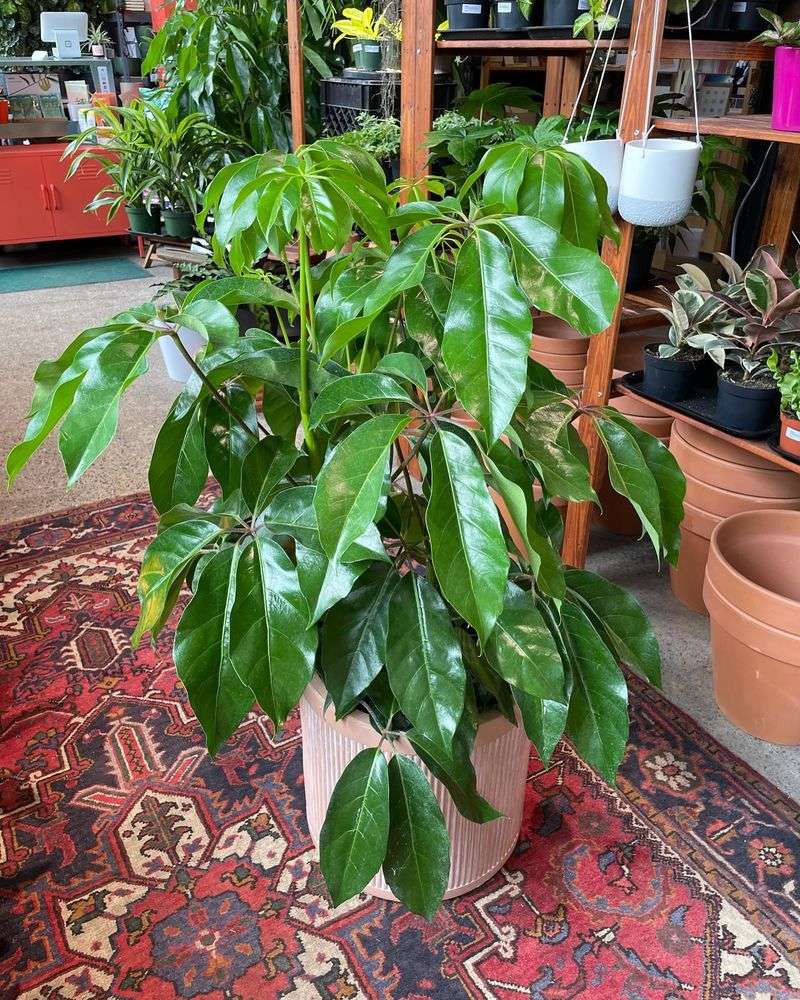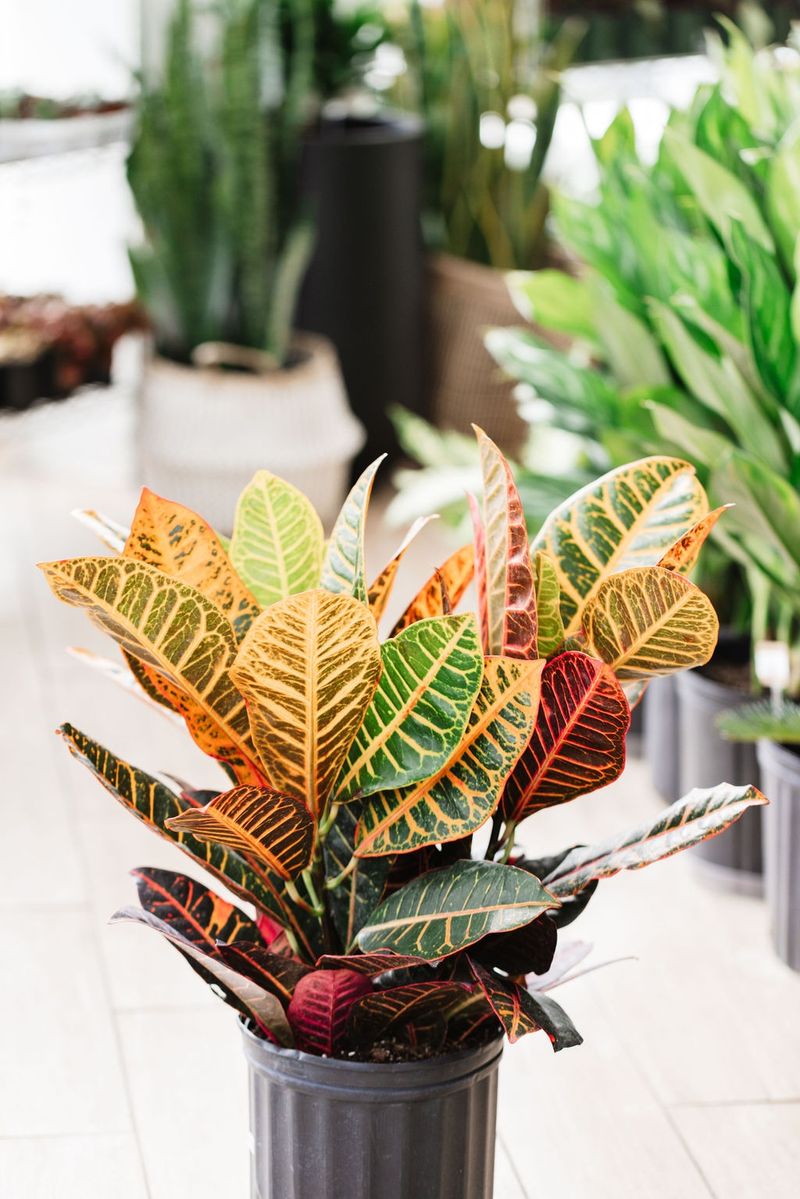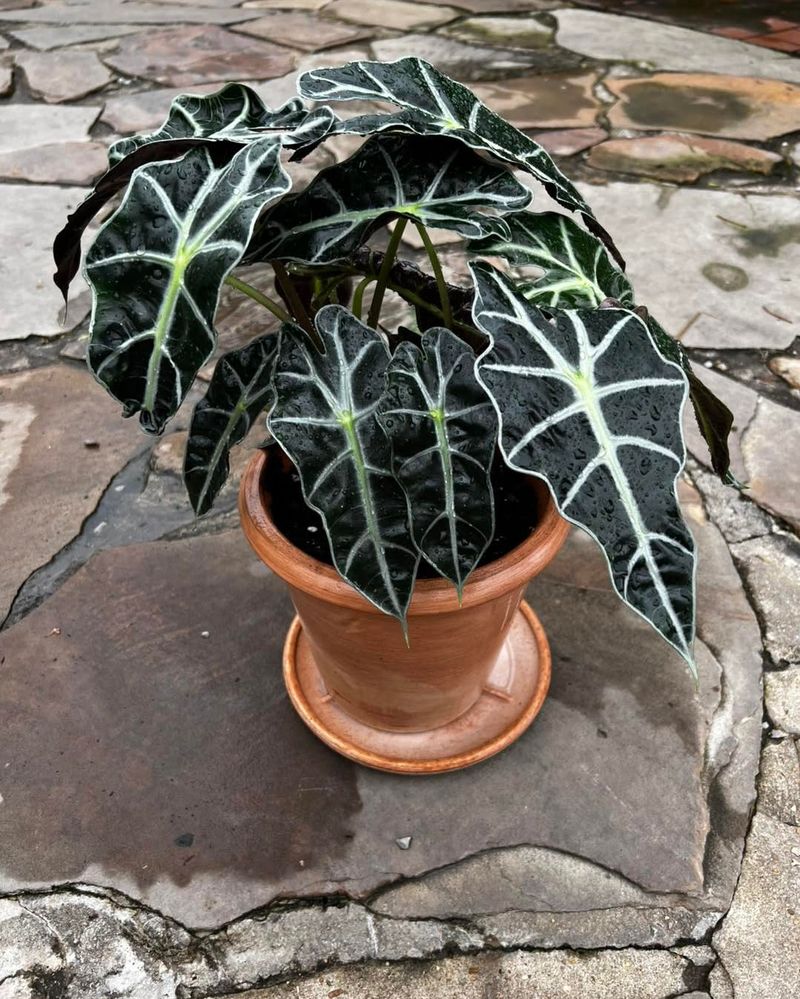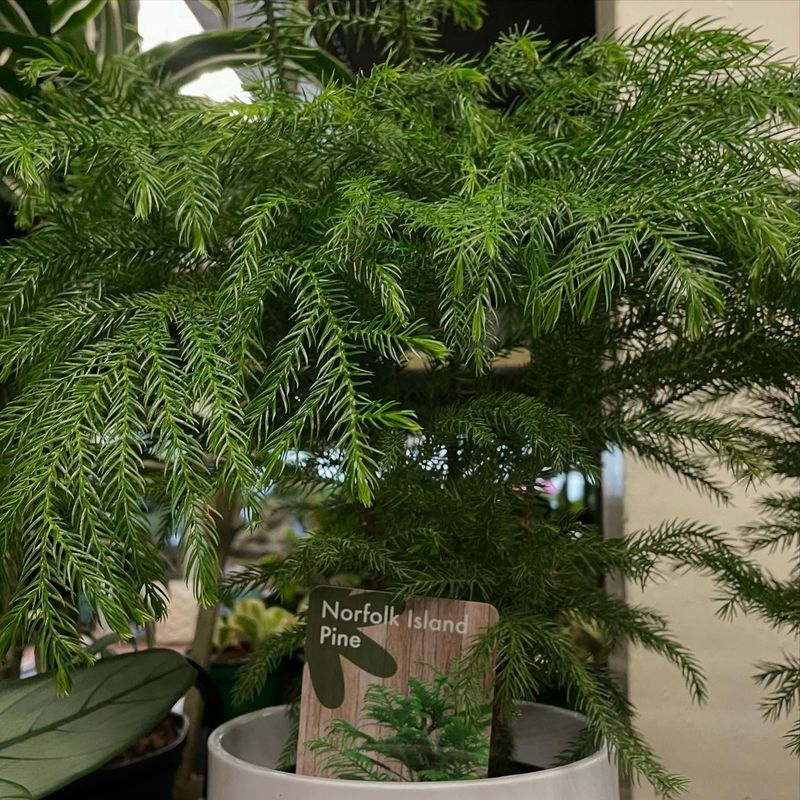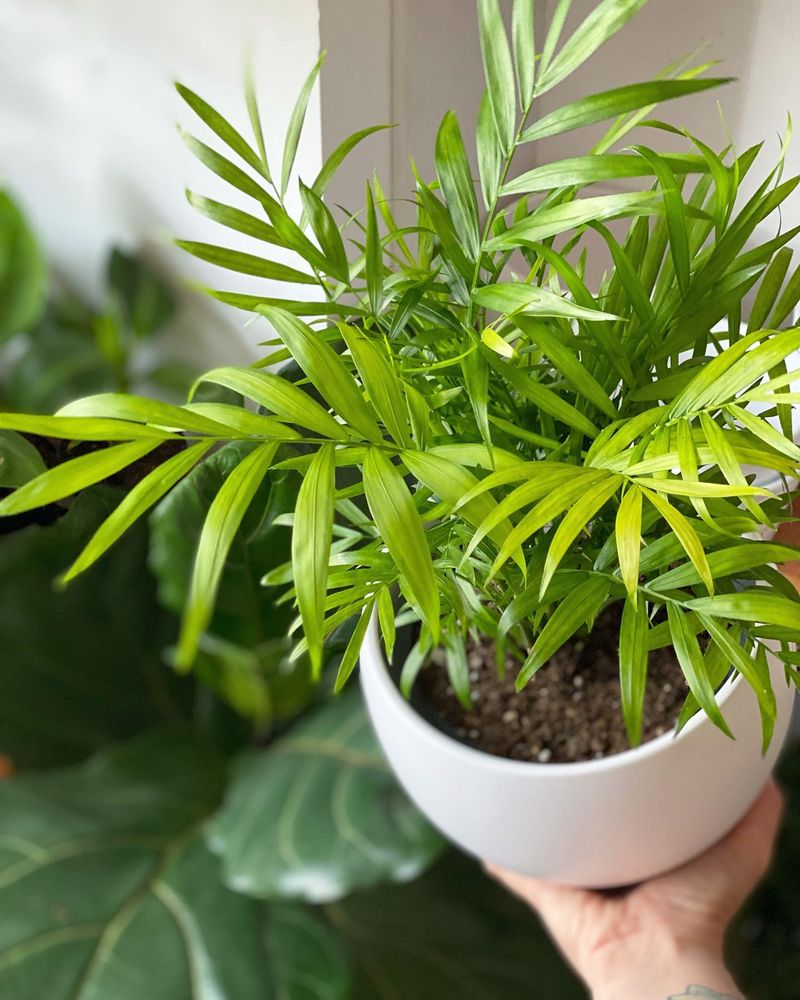If you love the bold look of fiddle leaf figs but aren’t sold on the maintenance, I’ve got some great alternatives for you! These plants bring the same lush, green vibes without the drama.
Say goodbye to the tricky care routine and hello to something just as stylish. From vibrant foliage to easy-going charm, these picks will fit perfectly in your space.
Let’s explore 17 fabulous plants that are ready to take the spotlight!
1. Rubber Plant
Looking for that same bold leaf statement without the heartbreak? The rubber plant delivers with its glossy, leathery leaves in deep green or burgundy varieties. Unlike its finicky cousin, this beauty tolerates lower light and occasional neglect.
Native to Southeast Asia, rubber plants grow at a manageable pace and can reach impressive heights when happy.
They clean the air while adding that perfect touch of jungle vibes to any room. Best of all, they’re remarkably forgiving if you forget to water them now and then.
2. Bird of Paradise
Dramatic and architectural, the bird of paradise brings instant tropical flair to any space with its paddle-shaped leaves that fan out impressively. These stunners can grow quite tall indoors, creating that statement presence you crave.
Surprisingly adaptable to indoor conditions, they prefer bright, indirect light but won’t collapse at the first sign of less-than-perfect care.
Their sturdy stems rarely need staking, and with proper care, mature plants might even reward you with their iconic crane-like flowers – something a fiddle leaf fig could never promise.
3. Money Tree
With its braided trunk and umbrella-like canopy of bright green leaves, the money tree brings both charm and good fortune according to feng shui principles. These cheerful plants thrive in bright, indirect light but adapt well to medium light conditions too.
Money trees appreciate consistent moisture but hate soggy roots, making them far more forgiving than fiddle leafs when it comes to watering schedules.
Their unique braided trunks add architectural interest, while their manageable size fits perfectly on tabletops or as medium-sized floor plants in apartments and smaller spaces.
4. Monstera Deliciosa
Already dethroning the fiddle leaf in popularity, the Swiss cheese plant captivates with its dramatic split leaves that develop more holes as they mature.
These tropical stunners bring instant jungle vibes while being surprisingly low-maintenance compared to fiddle leafs. Monsteras adapt to various light conditions, though they’ll produce more fenestrations (holes) in brighter spots.
They’re relatively drought-tolerant and communicate clearly when they need attention. Their vining nature means they can climb, trail, or be trained around a room, offering versatility that rigid fiddle leafs can’t match.
5. Dracaena Marginata
Often called dragon trees, these striking plants feature slender, arching leaves sprouting from woody stems that create instant height and drama.
Dracaenas thrive in average indoor conditions and can tolerate occasional drought, making them perfect for busy or forgetful plant parents.
Their slim profile works beautifully in tight spaces where a bulky fiddle leaf wouldn’t fit. As a bonus, they’re excellent air purifiers, removing toxins like formaldehyde and benzene from your home.
6. ZZ Plant
Nearly indestructible, the ZZ plant sports glossy, dark green leaves that grow in a graceful, arching pattern from thick stems. These architectural beauties thrive in low light conditions where fiddle leafs would quickly deteriorate and drop leaves.
ZZ plants store water in their potato-like rhizomes, allowing them to survive weeks without watering – perfect for travelers or the forgetful.
Their waxy leaves resist dust and stay shiny with minimal maintenance. While slower growing than some alternatives, their patience is rewarded with a plant that rarely complains and consistently looks polished.
7. Ficus Audrey
Consider the Ficus Audrey the more easygoing cousin in the fig family. With velvety, oval leaves and a light green color that brightens spaces, this Indian banyan tree descendant offers similar visual impact with less drama.
Unlike fiddle leafs, Audreys adapt better to changing conditions and won’t drop leaves at the slightest draft. They grow into impressive statement trees but respond well to pruning if you prefer a more compact shape.
8. Chinese Money Plant
Perfectly round leaves on delicate stems make the Pilea peperomioides (Chinese money plant) an adorable addition to any space. These quirky plants have skyrocketed in popularity for their unique pancake-shaped foliage and compact growth habit.
Pileas readily produce babies around their base, giving you free plants to share with friends. They prefer bright, indirect light but adapt to medium light conditions without complaint.
Their animated appearance as leaves bounce on thin stems brings a playful energy to shelves and tabletops where a fiddle leaf would be too imposing.
9. Snake Plant
Bold, upright, and virtually unkillable, snake plants bring architectural drama through their sword-like leaves in various patterns of green, yellow, and silver. These striking succulents thrive in conditions that would quickly kill a fiddle leaf fig.
Snake plants tolerate neglect, low light, and irregular watering while continuing to look fantastic. They’re champion air purifiers, working overtime while you sleep to convert CO2 to oxygen.
Available in various sizes from desktop to floor specimens, they fit anywhere you need that vertical accent without the maintenance headaches of more demanding plants.
10. Olive Tree
Bring Mediterranean charm indoors with a potted olive tree, whose silvery-green foliage creates a softer, more organic statement than fiddle leaf figs.
These ancient plants add instant sophistication and pair beautifully with both modern and traditional décor.
Indoor olive trees prefer bright light but won’t collapse if conditions aren’t perfect. Their gnarled trunks develop character with age, becoming more interesting over time.
While they grow slowly, that’s actually a benefit for indoor cultivation, as they won’t quickly outgrow their space like some faster-growing alternatives.
11. Philodendron Hope
Resembling a more manageable monstera, the Philodendron Hope Selloum offers deeply lobed, glossy green leaves that create dramatic tropical flair.
Unlike temperamental fiddle leafs, these jungle natives are remarkably resilient and communicate clearly when they need attention.
Hope philodendrons thrive in medium to bright indirect light but tolerate lower light conditions better than many statement plants.
Their elephant-ear shaped leaves grow on sturdy stems, creating an impressive canopy without the brittle branches that make fiddle leafs so precarious. As they mature, they develop a tree-like form that commands attention in any room.
12. Banana Plant
For truly dramatic foliage that outshines even the fiddle leaf, consider a dwarf banana plant. Their massive, paddle-shaped leaves unfurl like ribbons, creating instant tropical impact in any space they grace.
Indoor banana plants grow quickly when happy, providing that satisfying growth experience often missing with slower plants.
They prefer bright light but adapt to medium conditions with slightly slower growth. While they won’t produce fruit indoors, their lush, oversized leaves create a statement piece that turns any room into a tropical paradise without the fiddle leaf’s notorious sensitivity.
13. Umbrella Tree
Nostalgic yet timeless, the umbrella tree (Schefflera) offers glossy, palmate leaves that radiate from central points like little green umbrellas. These retro favorites from the 70s have made a stylish comeback for their adaptability and architectural form.
Umbrella trees thrive in average home conditions without fuss. They can be trained as single-trunk specimens or allowed to branch for a fuller look.
Available in variegated forms too, they add interest while remaining remarkably low-maintenance compared to fiddle leafs, tolerating occasional missed waterings and less-than-perfect light with grace.
14. Croton
For those missing the colorful drama of autumn leaves year-round, crotons deliver with their painterly foliage in fiery reds, oranges, yellows, and deep greens. These flamboyant plants add a color punch that green-only fiddle leafs can’t match.
Crotons thrive in bright light, which intensifies their remarkable coloration. While they prefer consistent moisture and humidity, they’re far more communicative than fiddle leafs, clearly drooping when thirsty then perking up quickly after watering.
15. Alocasia Polly
Often called African mask plants, Alocasia Polly features dramatically veined, arrow-shaped leaves with scalloped edges that look almost unreal in their geometric precision. These compact stunners pack major visual impact without demanding the ceiling height fiddle leafs require.
Their metallic, dark green leaves with contrasting white veins create striking contrast against any background.
While they do appreciate consistent moisture and humidity, they clearly communicate their needs, making them more readable than the often mysterious fiddle leaf. Their compact size works beautifully on tabletops, shelves, or grouped with other plants.
16. Norfolk Island Pine
Bringing year-round evergreen charm indoors, Norfolk Island pines create a sculptural statement with their symmetrical, tiered branches and soft needles. Despite their name, these aren’t true pines but tropical plants perfectly adapted to indoor life.
These living Christmas trees maintain their perfect pyramidal shape without pruning, growing slowly enough to enjoy for years in the same spot.
They prefer bright, indirect light but adapt to medium conditions with slightly slower growth. Unlike the rigid, unforgiving nature of fiddle leafs, Norfolk pines have a softer, more forgiving personality while still delivering that statement-making presence.
17. Parlor Palm
Graceful and airy, parlor palms have been beloved houseplants since Victorian times for good reason – they’re incredibly adaptable while bringing that coveted tropical feel. Their feathery fronds create movement and texture that stiff fiddle leaf figs can’t match.
These classic beauties thrive in lower light conditions where fiddle leafs would quickly deteriorate. They tolerate dry air better than most tropical plants and grow slowly enough to maintain their perfect proportions for years.
Perfect for smaller spaces or as understory plants in larger collections, parlor palms bring that vacation vibe without the high-maintenance attitude.

